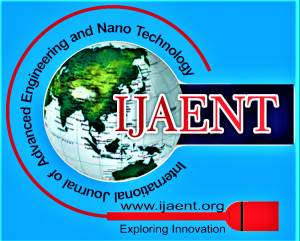![]()
Enzymatic Depolymerization of Nano Chitin Particles into N-Acetylglucosamine
G. N. Rameshaiah1, Y. K. Suneetha2
1Dr. G. N. Rameshaiah, Department of Chemical Engineering , BMS College of Engineering, Autonomous College Accredited by Washington Accord and Affiliated to Vishveswaraya Technological University, Karnataka, Bengaluru, India.
2Mrs. Y. K. Suneetha, Department of Chemical Engineering , BMS College of Engineering, Autonomous College Accredited by Washington Accord and Affiliated to Vishveswaraya Technological University, Karnataka, Bengaluru, India.
Manuscript received on November 22, 2014. | Revised Manuscript Received on November 24, 2014. | Manuscript published on December 18, 2014. | PP: 22-28 | Volume-2, Issue-1, December 2014.
Open Access | Ethics and Policies | Cite
© The Authors. Published By: Blue Eyes Intelligence Engineering and Sciences Publication (BEIESP). This is an open access article under the CC BY-NC-ND license (http://creativecommons.org/licenses/by-nc-nd/4.0/)
Abstract: Chitin is a crystalline polysaccharide widely spread in nature with three structures: alpha, beta and gamma chitins. Chitin is gaining importance for their biotechnological applications. Enzymatic depolymerisation of chitin to produce oligomers was carried out using the filamentous fungi Trichoderma harzianum (MTCC 3928). The bioprocess offers many advantages and helps to overcome the limitations of conventional chemical treatment which is presently used in industries. Chitin is treated with hydrochloric acid for chitin demineralization and to obtain colloidal nano size particles. Production of N-acetyl glucosamine was studied as a function of acid washed chitin in the particle size range of 74-125µm, pH of the broth media, and concentration of chitin and trace nutrients. N-acetylglucosamine yield was highest with particles of 125 µm size at solution pH5 and when incubated at 34℃ for 120 h in an orbital shaker with 160 revolutions per minute. Higher yield was obtained with initial chitin concentration of 10 g/L and lowered yield may be due to diffusion resistances and substrate inhibition at other concentrations. Trace nutrient concentration has an impact on both enzyme activity and product yield.
Keywords: Trichoderma harzianum, Chitin, N-acetylglucosamine
